Research Areas
My research spans several interdisciplinary areas, combining artificial intelligence, biomedical sensing, and signal processing to address critical healthcare challenges, particularly for neurological and developmental disorders.
Explainable AI for Predicting Adverse Behaviors in Autism Spectrum Disorder Using Nonintrusive Sleep Monitoring
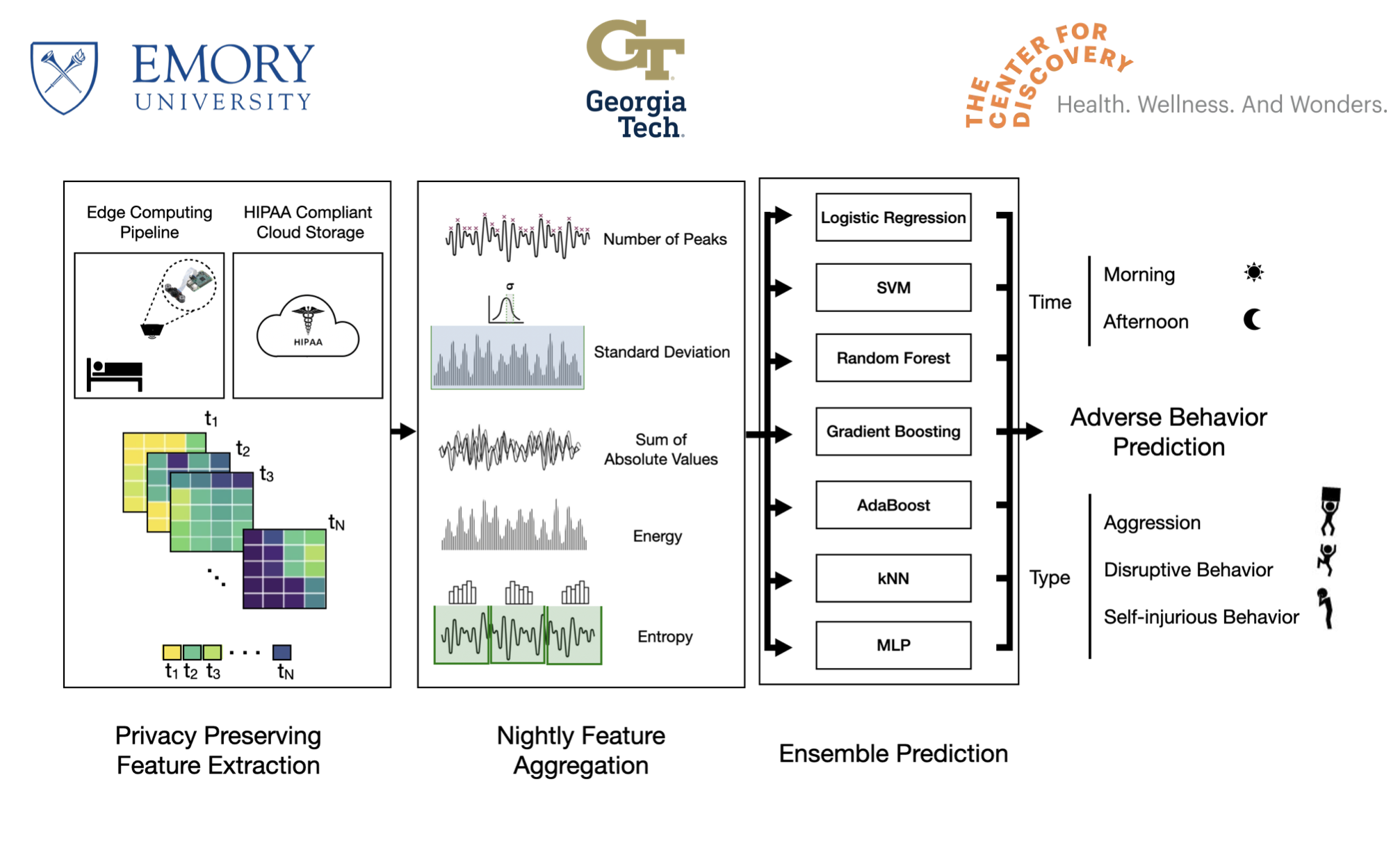
Developing AI models that analyze the dynamics of sleep and daytime behavior, this research aims to predict adverse behaviors in individuals with ASD by understanding their underlying physiological and psychological states. In collaboration with the The Center for Discovery, the project seeks to create an open-source tool for proactive interventions, reducing high-risk behaviors and improving care for individuals with ASD.
Related Publications
- Kiarashi, Y., Suresha, P.B., Rad, A.B., Reyna, M.A., Anderson, C., Foster, J., Lantz, J., Villavicencio, T., Hamlin, T. and Clifford, G.D., 2024. Off-body Sleep Analysis for Predicting Adverse Behavior in Individuals with Autism Spectrum Disorder. IEEE Journal of Biomedical and Health Informatics. Link
- Kiarashi, Y., Lantz, J., Reyna, M.A., Anderson, C., Rad, A.B., Foster, J., Villavicencio, T., Hamlin, T. and Clifford, G.D., 2024. Predicting seizures episodes and high-risk events in autism through adverse behavioral patterns. Link
- Rad, A. B., Villavicencio, T., Kiarashi, Y., Anderson, C., Foster, J., Kwon, H., Hamlin, T., Lantz, J. & Clifford, G. D., 2025 . From motion to emotion: exploring challenging behaviors in autism spectrum disorder through analysis of wearable physiology and movement. Physiological Measurement. Link
AI-Driven Cognitive Assessment in MCI Using Sleep and Daytime Activity Monitoring
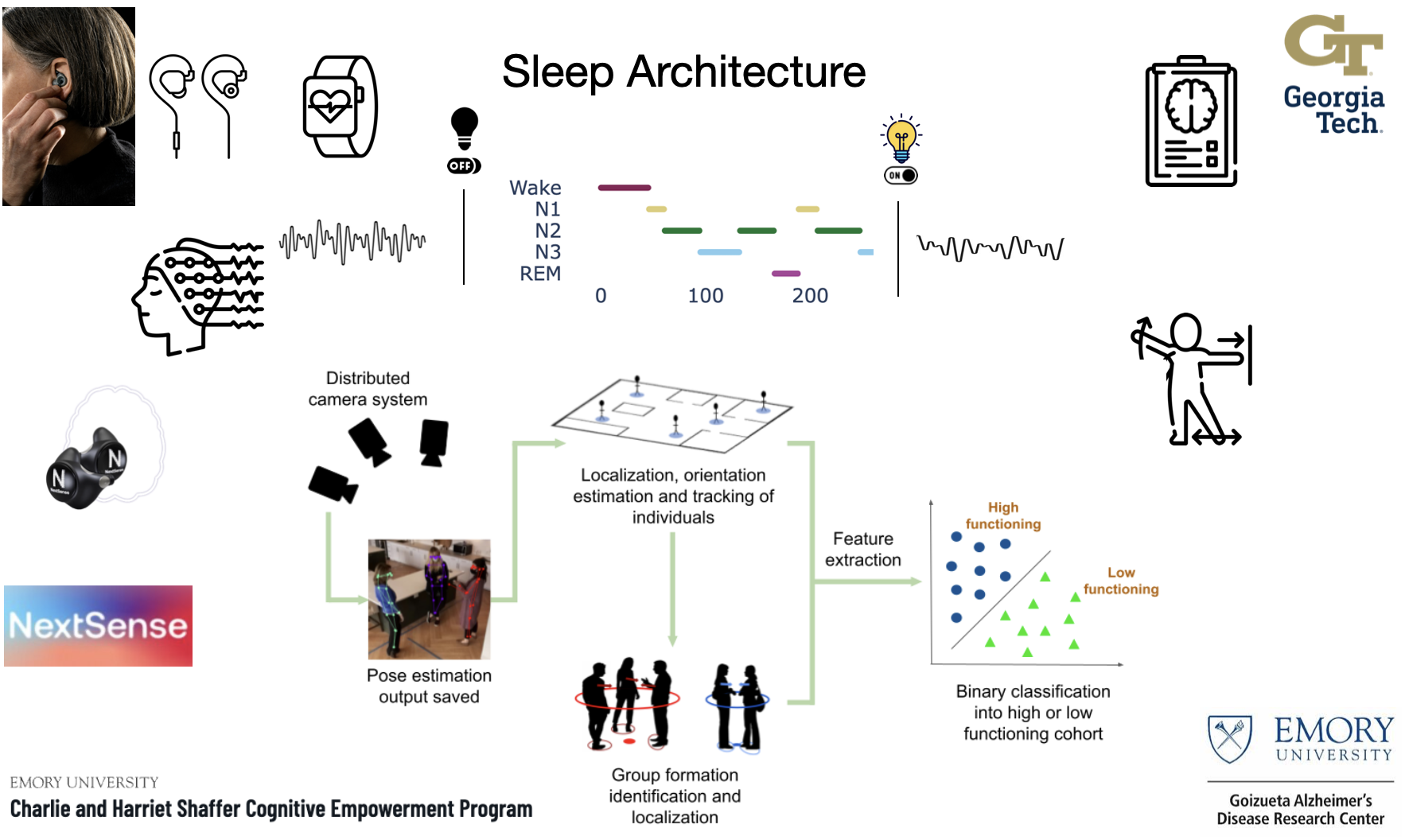
This project assesses cognitive status in individuals with Mild Cognitive Impairment (MCI) by analyzing sleep patterns and daytime activities through nonintrusive, continuous monitoring. Utilizing in-ear EEG, overnight wristbands, and wearable sensors in therapeutic facilities, the system integrates edge computing, AI, cameras, and sensors to track social interactions and movements in real-time. By providing a cost-effective, passive monitoring solution, this research aims to enhance understanding of MCI and support data-driven, targeted interventions.
Related Publications
- Hegde, C., Kiarashi, Y., Levey, A.I., Rodriguez, A.D., Kwon, H. and Clifford, G.D., 2024. Feasibility of assessing cognitive impairment via distributed camera network and privacy-preserving edge computing. AAlzheimer's & Dementia: Diagnosis, Assessment & Disease Monitoring, 17(1), e70085. Link
- Kiarashi, Y., Saghafi, S., Das, B., Hegde, C., Madala, V.S.K., Nakum, A., Singh, R., Tweedy, R., Doiron, M., Rodriguez, A.D. and Levey, A.I., 2023. Graph Trilateration for Indoor Localization in Sparsely Distributed Edge Computing Devices in Complex Environments Using Bluetooth Technology. Sensors, 23(23), p.9517. Link
- Hegde, C., Kiarashi, Y., Rodriguez, A.D., Levey, A.I., Doiron, M., Kwon, H. and Clifford, G.D., 2024. Indoor Group Identification and Localization Using Privacy-Preserving Edge Computing Distributed Camera Network. IEEE journal of indoor and seamless positioning and navigation. Link
- Kiarashi, Y., Hedge, C., Madala, V.S.K., Nakum, A., Singh, R., Tweedy, R., Clifford, G.D. and Kwon, H., 2023. Indoor localization using bluetooth and inertial motion sensors in distributed edge and cloud computing environment. arXiv preprint arXiv:2305.19342. Link
- Kwon, H., Hegde, C., Kiarashi, Y., Madala, V.S.K., Singh, R., Nakum, A., Tweedy, R., Tonetto, L.M., Zimring, C.M., Doiron, M. and Rodriguez, A.D., 2023. A feasibility study on indoor localization and multi-person tracking using sparsely distributed camera network with edge computing. IEEE Journal of Indoor and Seamless Positioning and Navigation. Link
George B. Moody PhysioNet Challenges
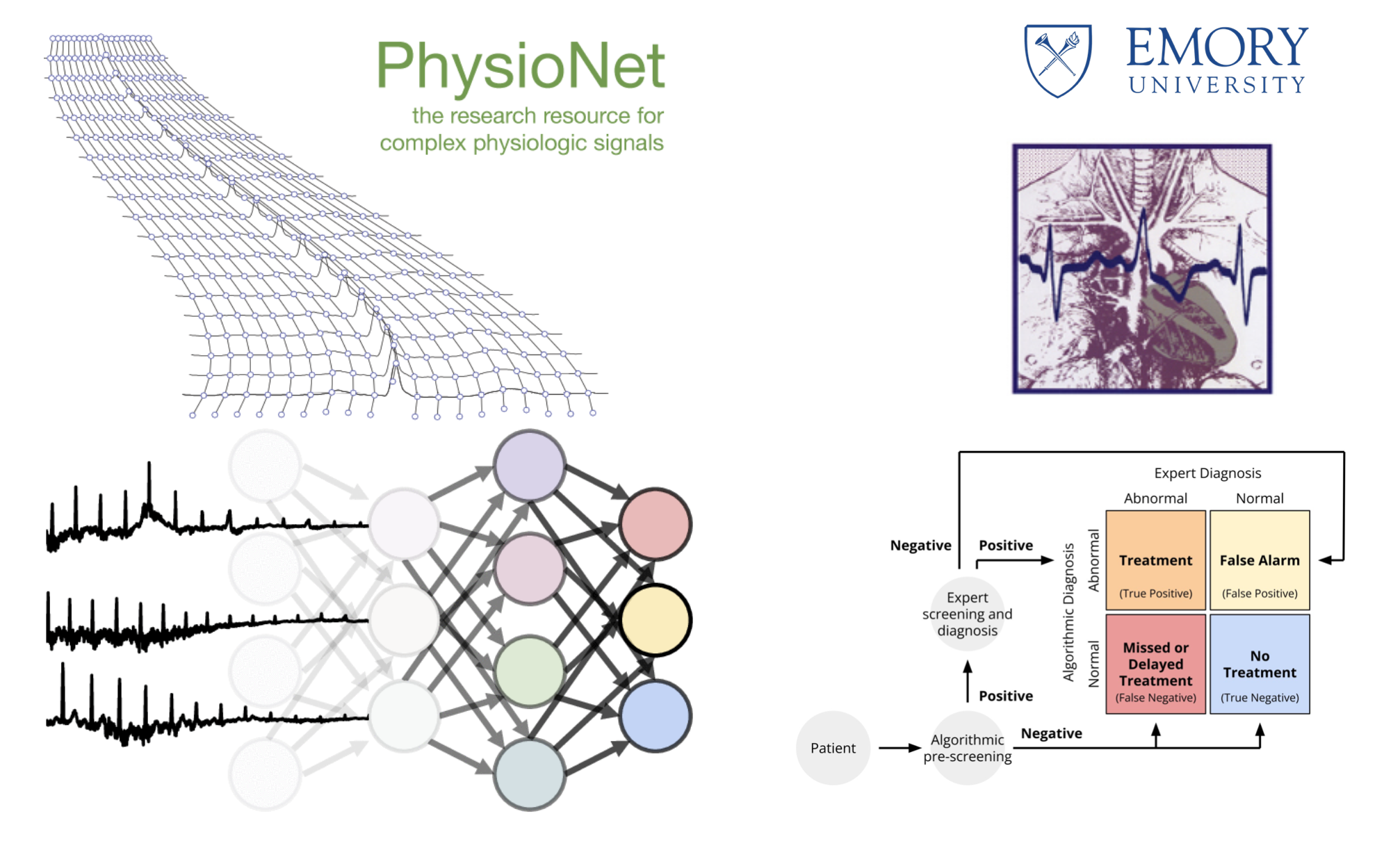
Since December 2021, I have been part of the organizing team for the George B. Moody PhysioNet Challenges. Hosted annually by PhysioNet in cooperation with the Computing in Cardiology conference, these challenges focus on advancing biomedical research by addressing unsolved problems in clinical and basic science. The challenges are supported by major institutions such as the NIH, Google, and the Gordon and Betty Moore Foundation. PhysioNet offers open access to large physiological data sets and related open-source software to drive research and education.
Related Publications
- Reyna, M.A., Deepanshi, Weigle, J., Koscova, Z., Campbell, K., Kodthalu Shivashankara, K., Saghafi, S., Nikookar, S., Motie-Shirazi, M., Kiarashi, Y., Seyedi, S., Clifford, G.D. & Sameni, R., 2024. ECG-Image-Database: A Dataset of ECG Images with Real-World Imaging and Scanning Artifacts; A Foundation for Computerized ECG Image Digitization and Analysis. arXiv. Link
- Reyna, M.A., Kiarashi, Y., Elola, A., Oliveira, J., Renna, F., Gu, A., Perez-Alday, E.A., Sadr, N., Sharma, A., Mattos, S. and Coimbra, M.T., 2022. Heart murmur detection from phonocardiogram recordings: The George B. Moody PhysioNet Challenge 2022. medRxiv, 11, p.278688. Link
- Reyna, M.A., Kiarashi, Y., Elola, A., Oliveira, J., Renna, F., Gu, A., Perez-Alday, E.A., Sadr, N., Sharma, A., Mattos, S. and Coimbra, M.T., 2022. Heart murmur detection from phonocardiogram recordings: The George B. Moody PhysioNet Challenge 2022. Computing in Cardiology 2022. Link
Probabilistic Models for Severity Assessment of Lung Disease
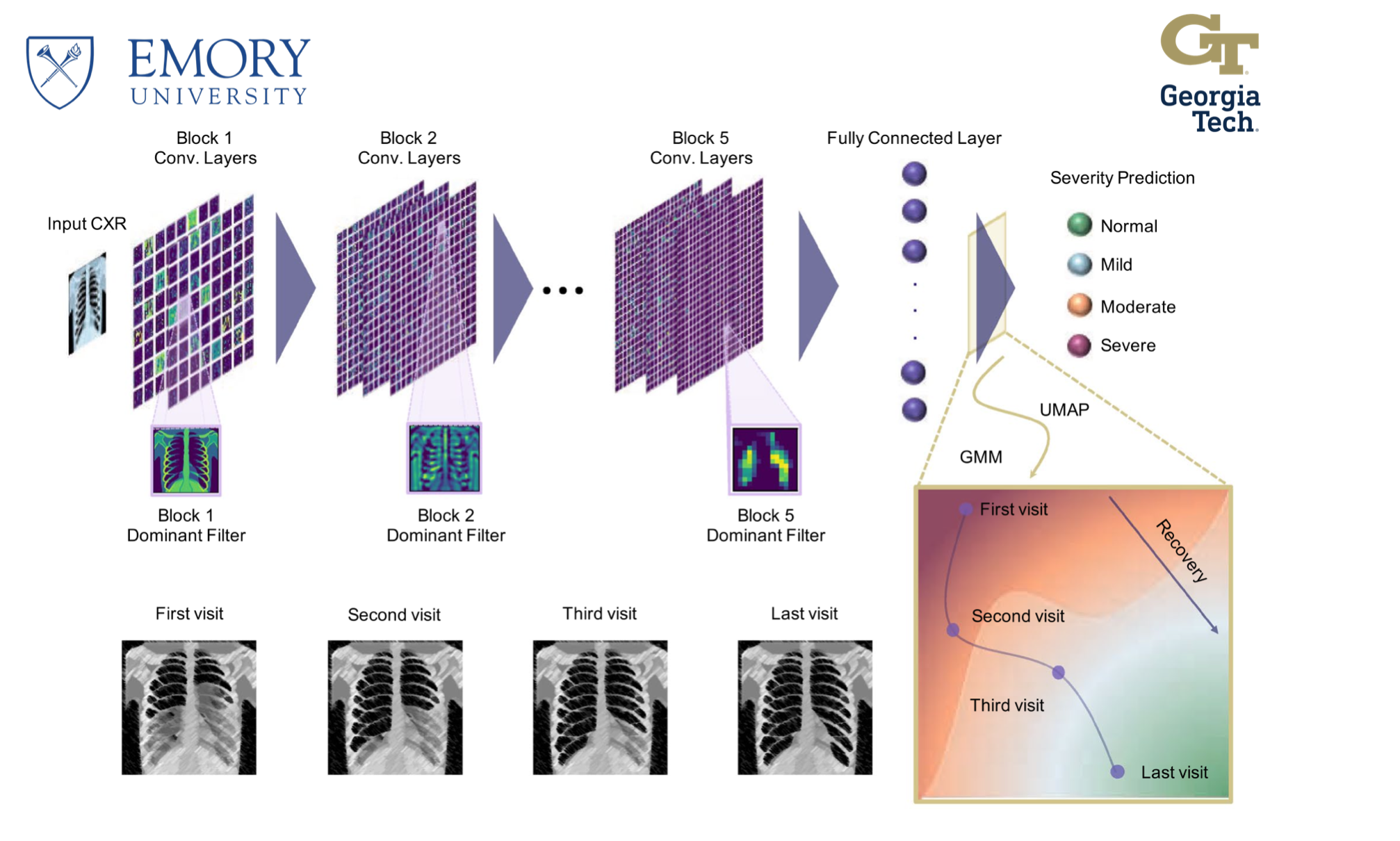
This project focuses on developing a series of interpretable probabilistic models to assess the severity of lung disease, particularly COVID-19 pneumonia, without sacrificing generality. Our model not only predicts severity class but also provides prediction uncertainty and saliency maps to enhance interpretability and reliability. This approach helps ensure better clinical understanding and trust in the predictions, using available data from chest X-rays and a multi-reader dataset.
Related Publications
- Zandehshahvar, M., van Assen, M., Kim, E., Kiarashi, Y., Keerthipati, V., Tessarin, G., Muscogiuri, E., Stillman, A.E., Filev, P., Davarpanah, A.H. and Berkowitz, E.A., 2024. Confidence-Aware Severity Assessment of Lung Disease from Chest X-Rays Using Deep Neural Network on a Multi-Reader Dataset. Journal of Imaging Informatics in Medicine, pp.1-11. Link
- Van Assen, M., Zandehshahvar, M., Maleki, H., Kiarashi, Y., Arleo, T., Stillman, A.E., Filev, P., Davarpanah, A.H., Berkowitz, E.A., Tigges, S. and Lee, S.J., 2022. COVID-19 Pneumonia Chest Radiographic Severity Score: Variability Assessment Among Experienced and In-Training Radiologists and Creation of a Multi-Reader Composite Score Database for Artificial Intelligence Algorithm Development. The British Journal of Radiology, 95(1134), p.20211028. Link
- Zandehshahvar, M., van Assen, M., Maleki, H., Kiarashi, Y., De Cecco, C.N. and Adibi, A., 2021. Toward Understanding COVID-19 Pneumonia: A Deep-Learning-Based Approach for Severity Analysis and Monitoring the Disease. Scientific Reports, 11(1), p.11112. Link
Knowledge Discovery in Nanophotonics Using AI
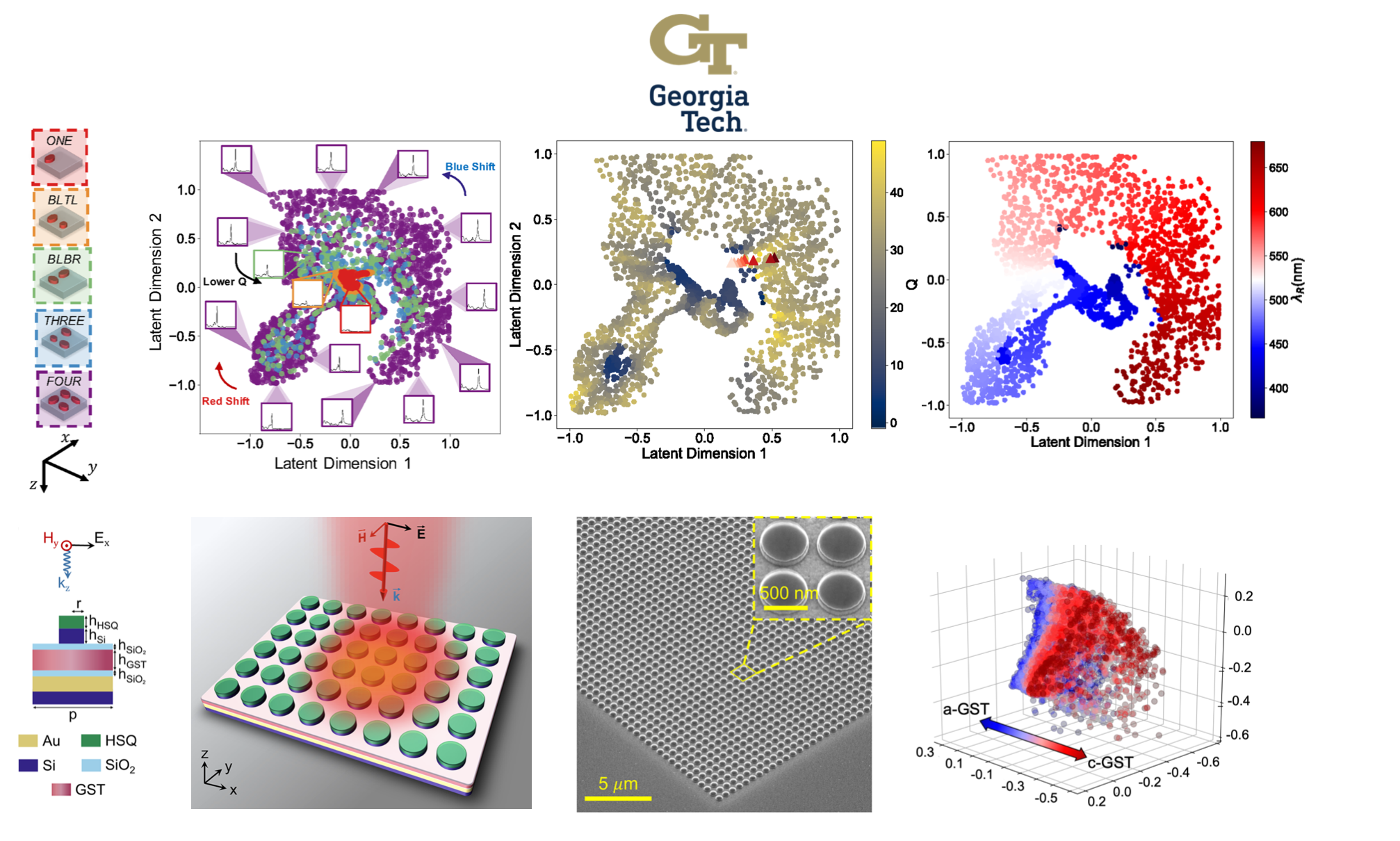
This research presents a novel paradigm for designing nanostructures and understanding light-matter interactions through explainable AI (XAI) techniques. Conventional approaches struggle with the high-dimensional design space and non-unique input-output relations in nanophotonic structures. To overcome these challenges, we developed dimensionality reduction (DR) techniques to simplify the design process and an inverse design approach to resolve the non-uniqueness problem.
By employing manifold learning, we reduced the complexity of the inverse design problem while preserving key information. This enabled the discovery of optimal nanostructures with minimal geometrical complexity, resulting in innovative methods to accelerate designing all-optical neuro-inspired computing frameworks and nanoscale biosensors.
Related Publications
- Kiarashinejad, Y. and Adibi, A., Georgia Tech Research Corp, 2023. Optical co-processor architecture using array of weak optical perceptron. U.S. Patent Application 17/919,051. Link
- Zandehshahvar, M., Kiarashi, Y., Zhu, M., Bao, D., H Javani, M., Pourabolghasem, R. and Adibi, A., 2023. Metric learning: harnessing the power of machine learning in nanophotonics. Acs Photonics, 10(4), pp.900-909. Link
- Kiarashinejad, Y., Zandehshahvar, M., Abdollahramezani, S., Hemmatyar, O. and Adibi, A., Georgia Tech Research Corp, 2022. Geometric Learning-Based Method for Discovery of Optical Phenomena in Nanophotonic Structures. U.S. Patent Application 17/474,523. Link
- Zandehshahvar, M., Kiarashi, Y., Zhu, M., Maleki, H., Brown, T. and Adibi, A., 2022. Manifold learning for knowledge discovery and intelligent inverse design of photonic nanostructures: breaking the geometric complexity. Acs Photonics, 9(2), pp.714-721. Link
- Kiarashinejad, Y., Abdollahramezani, S. and Adibi, A., Georgia Tech Research Corp, 2022. Systems and Methods for Enhanced Engineering Design and Optimization. U.S. Patent Application 17/294,837. Link
- Zandehshahvar, M., Kiarashi, Y., Chen, M., Barton, R. and Adibi, A., 2021. Inverse design of photonic nanostructures using dimensionality reduction: reducing the computational complexity. Optics Letters, 46(11), pp.2634-2637. Link
- Abdollahramezani, S., Hemmatyar, O., Taghinejad, M., Taghinejad, H., Kiarashinejad, Y., Zandehshahvar, M., Fan, T., Deshmukh, S., Eftekhar, A.A., Cai, W. and Pop, E., 2021. Dynamic hybrid metasurfaces. Nano Letters, 21(3), pp.1238-1245. Link
- Hemmatyar, O., Abdollahramezani, S., Kiarashinejad, Y., Zandehshahvar, M. and Adibi, A., 2019. Full color generation with fano-type resonant hfo 2 nanopillars designed by a deep-learning approach. Nanoscale, 11(44), pp.21266-21274. Link
- Kiarashinejad, Y., Abdollahramezani, S., Zandehshahvar, M., Hemmatyar, O. and Adibi, A., 2019. Deep learning reveals underlying physics of light–matter interactions in nanophotonic devices. Advanced Theory and Simulations, 2(9), p.1900088. Link
- Kiarashinejad, Y., Abdollahramezani, S. and Adibi, A., 2020. Deep learning approach based on dimensionality reduction for designing electromagnetic nanostructures. npj Computational Materials, 6(1), p.12. Link
- Kiarashinejad, Y., Zandehshahvar, M., Abdollahramezani, S., Hemmatyar, O., Pourabolghasem, R. and Adibi, A., 2020. Knowledge discovery in nanophotonics using geometric deep learning. Advanced Intelligent Systems, 2(2), p.1900132. Link